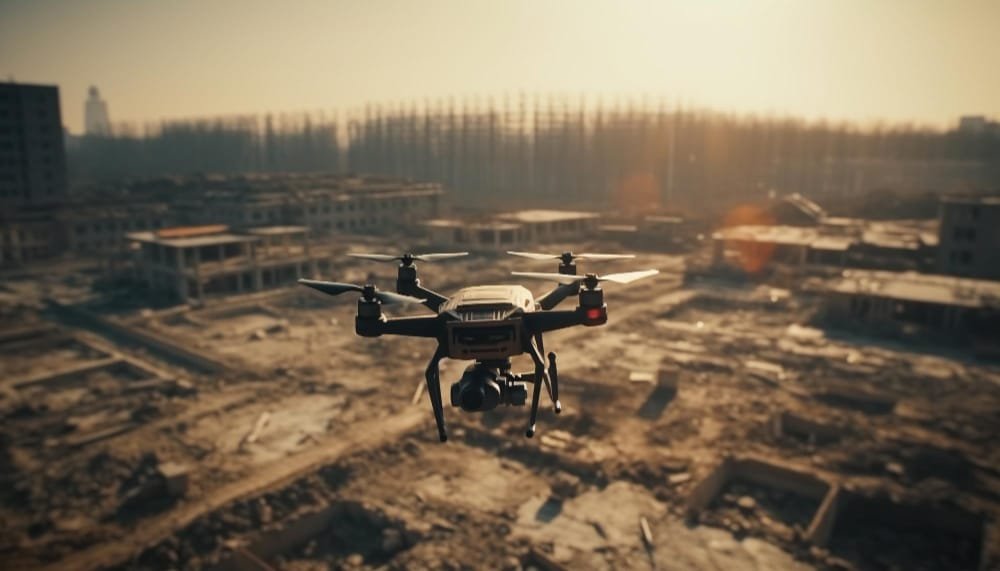Just as the world continues to progress, so does technology. One of the best examples is drones. We’ve seen them go from simple remote-controlled toys to devices that can singlehandedly change an entire industry and then some. From photography to agriculture and even package delivery, there’s no limit to what they can do.
The evolution of drone technology
Since their inception, drones have come a long way. Once primarily used for military purposes such as surveillance and reconnaissance, they’ve become smaller, more affordable, and more accessible to operate. This is why it’s unsurprising, considering how widely adopted they are in various industries.
Drones have been equipped with all kinds of technology, making them better for flying. They have longer flight times than ever, letting photographers take all the time they need for the perfect shot. The stability has also been enhanced, allowing more control over where exactly the camera points from above.
In addition to stability, they’ve also gotten much better cameras overall. High-resolution technology allows users to capture stunning visuals from unique angles that were once impossible.
Thanks to technological advancements in batteries, cameras are getting longer lives, and drones can fly for extended periods without needing a recharge. Applications in farming use this advantage by deploying drones over crops, monitoring their health, or detecting pests or diseases. Meanwhile, it still covers more extensive areas than possible on a single charge.
Aerial Photography and Videography
Photographers and videographers benefit immensely from the drone market, which has advanced dramatically over the years. These machines have changed everything about capturing footage from high above ground level, giving everyone new perspectives on environments like never before.
Years ago, aerial photo shoots required either helicopters or costly equipment, which aren’t ideal options for everyone interested in getting those beautiful shots up high any more. Thanks to drones, anyone who owns one can get one-of-a-kind images without breaking the bank or probably even attending classes somewhere first. With high-resolution cameras attached to drones, you can capture pictures and videos from angles no one else would even think of trying.
Filmmaking has also advanced dramatically with the use of drones. Filmmakers now have the option to shoot aerial sequences that can blow audiences away when they watch them back, adding depth and visual interest to their films. The ability to take complex tracking shots or follow fast subjects is another excellent feature for anyone who could use these kinds of clips.
Even though we don’t often think about real estate when imagining what one would use drones for, it’s become a big-time game changer with agents showcasing properties from up above. If you’re looking at pictures and trying to decide if a house is right for you or not, having an image taken from a bird’ s-eye view will help you understand how close it is to everything else in the area and give you a better sense of its surroundings in general.
Drones in Agriculture
Farmers are now leveraging drone technology like never before to manage crops more efficiently, ultimately increasing yields.
Crop monitoring, precision agriculture, and crop surveying and mapping are among the notable applications of drones in agriculture. Drones with specialized sensors and cameras provide farmers with multispectral images to help them evaluate their crops’ health and identify problems such as a lack of nutrients or pests. They can also help farmers save resources by using fertilizers, pesticides, and herbicides accurately. With precise targeting of specific areas within a field, farmers can improve operation efficiency, reduce chemical usage, minimize environmental impact, and maximize crop yield.
Drones have enormous potential to assist in search and rescue efforts during natural disasters like earthquakes or hurricanes. (They’ve already come in handy here.). Equipped with thermal cameras and other sensors that detect body heat, they can provide crucial information for faster search and rescue missions. As they can cover large areas quickly, saving precious time, drones increase the chances of locating people more rapidly.
As drones become more common, concerns around privacy, safety, and regulations must be addressed. While they offer many benefits, the reckless use of drones can have dangerous consequences.
One of the most significant worries is the invasion of privacy. With their ability to take high-resolution images and videos, drones could easily invade people’s personal spaces if not used responsibly. Many countries have tried to address this issue by enacting regulations that require drone operators to respect individuals’ privacy and obtain permissions for specific areas.
Safety is another critically important concern when it comes to drone operations. Drones share airspace with other aircraft, including operated ones; a collision could be catastrophic. Therefore, drone operators must obey strict safety guidelines, such as maintaining a safe distance from airports, flying within a visual line of sight, and avoiding restricted airspace.
Regulations surrounding drone operations vary from country to country, so drone operators need to familiarize themselves with the rules in their region. This will ensure the responsible use and operation of drones while minimizing associated risks.
Trends and advancements expected in future drone technology
The future looks bright for drone technology, with ongoing research paving the way for mind-blowing innovations. Several trends and advancements are expected to shape the future of drones.
Researchers are currently developing autonomous drones that can navigate without human intervention. If successful, these drones could perform complex tasks autonomously, like inspecting infrastructure or assisting in disaster response missions.
Swarms of drones that work together are also being developed. These swarms can tackle tasks that would be impossible or extremely difficult for an individual drone, like search and rescue over expansive areas or providing comprehensive views over an area.
Advancements in battery technology will also lead to longer flight times, allowing drones to cover excellent distances. This will make them more valuable, especially in industrial activities where tasks require extensive time performance.
Finally, artificial intelligence (AI) integration also holds great potential because its algorithms will enable real-time data analysis, intelligent decision-making, and the ability to adapt. These capabilities would enhance the drone’s performance in object detection, autonomous navigation, and data analysis.
Challenges and limitations of drone technology
However much potential drones hold, several challenges come with them and must be addressed. One of the main ones is airspace management. With time, more people will have drones, meaning more drones will occupy the sky, which increases the chances of collisions. Therefore, drone operators, regulatory bodies, and aviation authorities must collaborate to establish efficient airspace management systems.
Limited battery life is another challenge with drones. Although battery technology keeps improving as time goes by, traditional aircraft still have relatively long flight times compared to drones’ short ones. This means they cannot fly long distances, making them unsuitable for long-distance missions.
Moreover, the weather isn’t a friend to drones either. Heavy gusts of wind or rain can cast a shadow on drone performance. Not only will this impact its stability and control, but it will also lessen the quality of its videos and photos. Companies need to focus on designing drones to combat these harsh elements.
Price is another issue we need to address when it comes to drones. Although prices certainly fall, high-end professional drones can still be quite expensive. This high price makes it impossible for some industries and professionals to utilize the desperately needed technology.
Conclusion
Overall, drone technology has revolutionized many industries in ways we couldn’t have imagined 20 years ago. Whether you’re trying to get a stunning aerial photograph or track down your lost cat, there doesn’t seem to be much that drones can’t do.
But not everything about them is perfect. With any new technological advancement, there are always concerns with safety (especially in populated areas), privacy (especially if the drone is outfitted with cameras), and regulations (the FAA still regularly updates its guidelines). To benefit from this technology, which we absolutely should, people must use it responsibly and obey guidelines set by governing bodies.
That said, things are looking great for drones in the future. With autonomous flight already here and swarm capabilities being tested as you read this article, battery life may be next on our list of improvements.
As soon as scientists develop smaller batteries that provide as much juice as your current ones,? The sky’s the limit! Who knows what kind of incredible things we’ll be able to accomplish?

